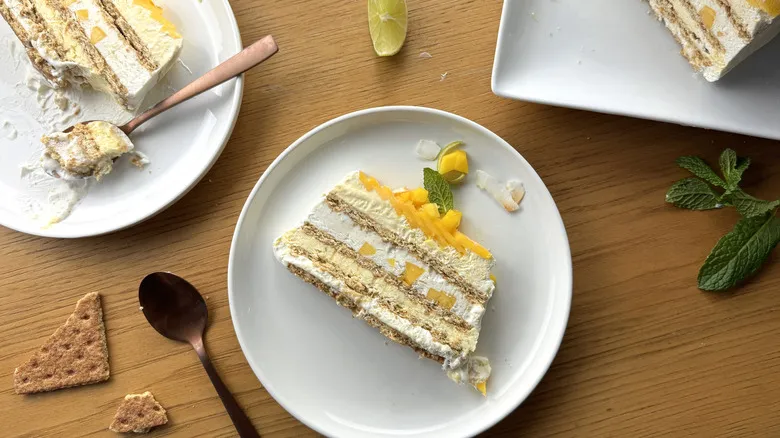Gather the ingredients for the frozen mango float (Filipino icebox dessert)
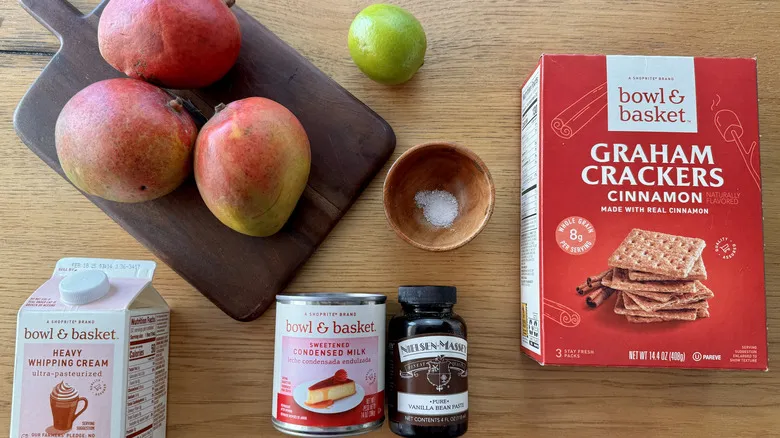
The primary component that gives this dessert its flavor is mangoes. Additionally, you'll require heavy cream, sweetened condensed milk, vanilla extract, salt, and lime for the filling, along with graham crackers to create the layers. Rosenhouse opted for cinnamon graham crackers to add a subtle touch of sweet spice, but regular graham crackers would be perfectly fine too.
Step 1: Prepare a pan
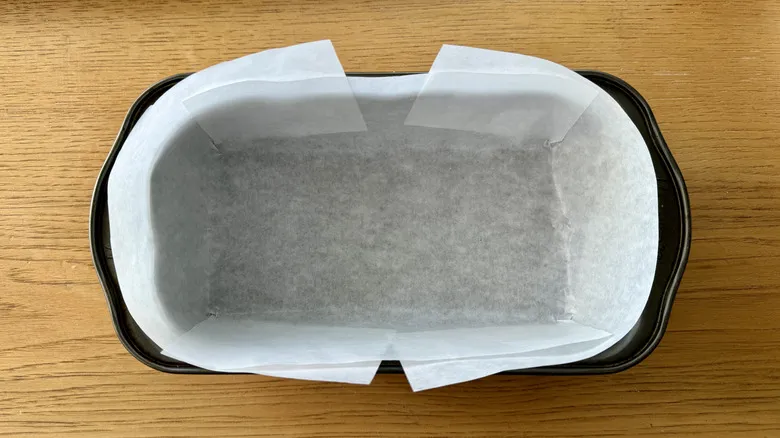
Prepare a 9 x 5-inch loaf pan by lining it with parchment paper or plastic wrap; set it aside.
Step 2: Peel and slice a mango
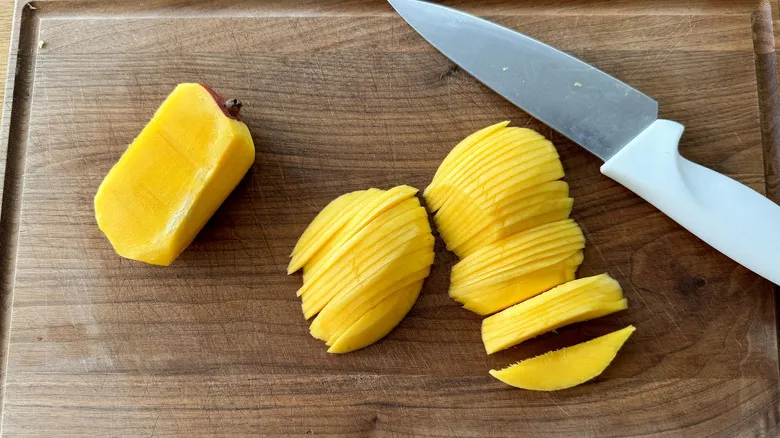
Remove the skin, cut around the seed, and slice one mango into thin pieces.
Step 3: Put the mango in the pan
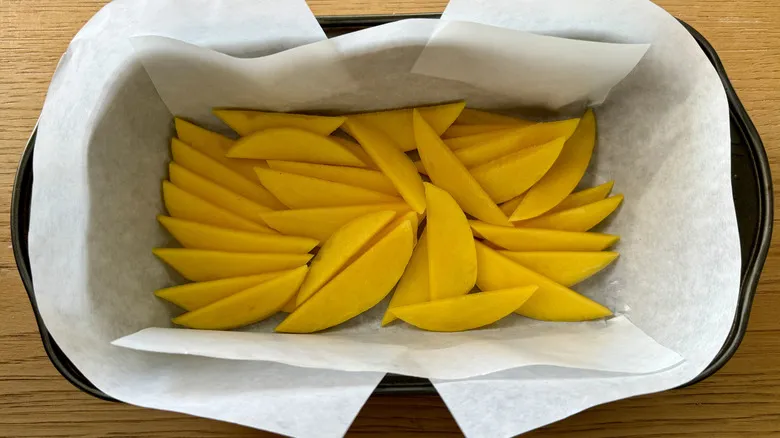
Arrange slices of mango in a playful design within the loaf pan.
Step 4: Peel and chop a mango
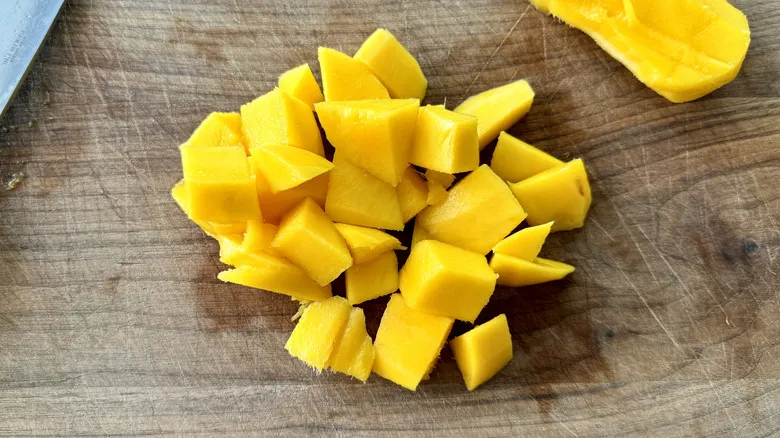
Remove the skin, slice around the pit, and coarsely chop one mango.
Step 5: Puree the chopped mango
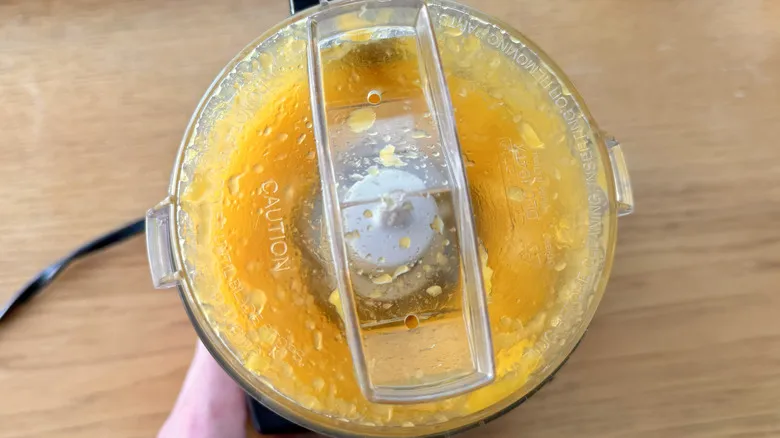
Move the mango chunks to a small food processor or blender and blend until smooth. You should end up with approximately ½ cup of puree. Set it aside.
Step 6: Peel and chop the remaining mangoes
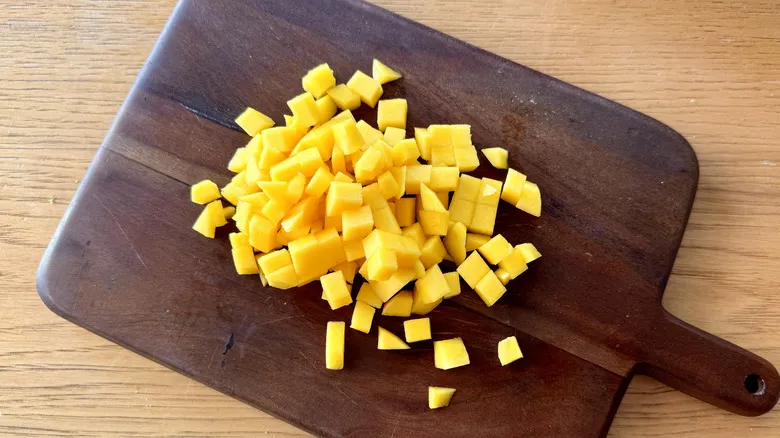
Remove the skin, slice around the pit, and chop the remaining mango into small cubes. Put aside.
Step 7: Whip the cream
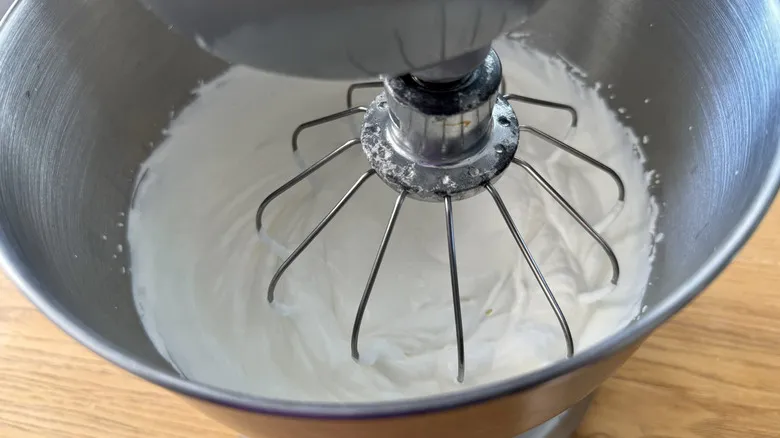
Using a stand mixer with a whisk attachment (or a handheld mixer), beat the heavy cream until soft peaks form.
Step 8: Mix in the milk, vanilla, and salt
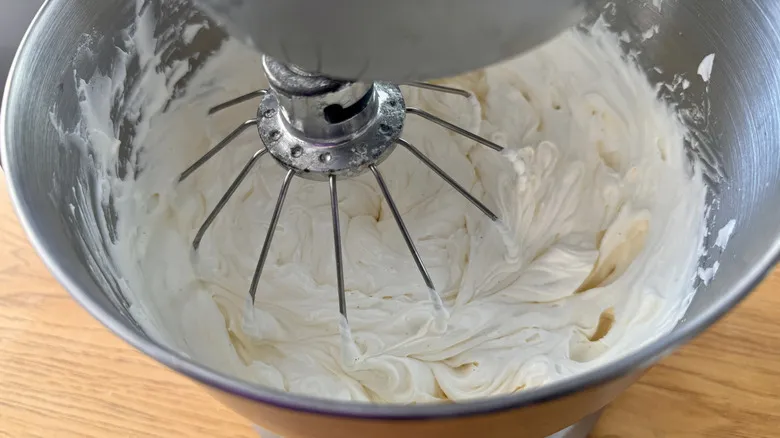
Incorporate the condensed milk, vanilla, and salt, then whip until medium peaks form.
Step 9: Combine half the cream with the mango puree
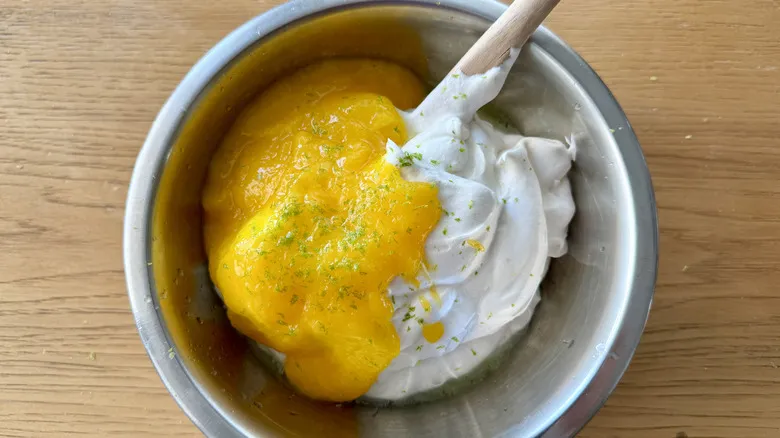
Scoop out half of the whipped cream mixture into a bowl and gently incorporate the mango puree along with the zest of half a lime.
Step 10: Put half of the mango cream in the pan
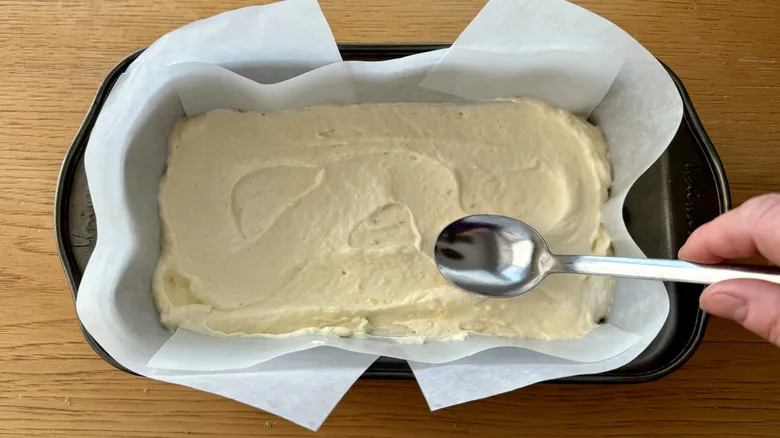
Spread half of the whipped mango mixture over the sliced mango in the loaf pan, ensuring an even coating.
Step 11: Add some graham crackers
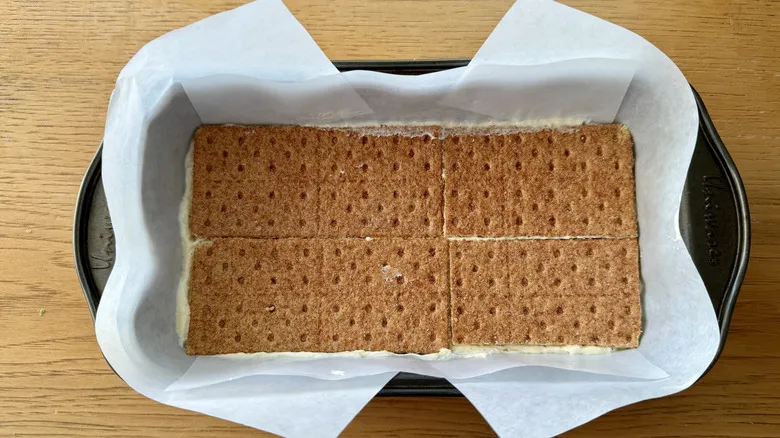
Layer 4 sheets of graham crackers on top, trimming them with a sharp knife if necessary to ensure a snug fit in the pan.
Step 12: Follow with vanilla whipped cream
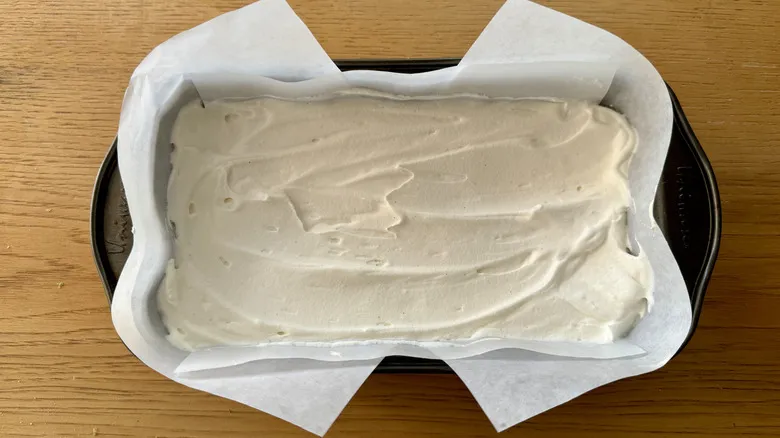
Spread half of the vanilla whipped cream mixture evenly on top.
Step 13: Add some diced mango
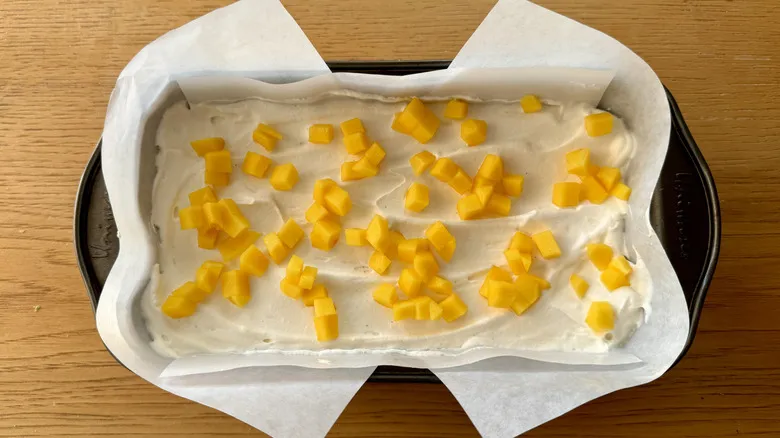
Evenly distribute half of the diced mango over the dish. Store the leftover mango in the refrigerator.
Step 14: Repeat the layers
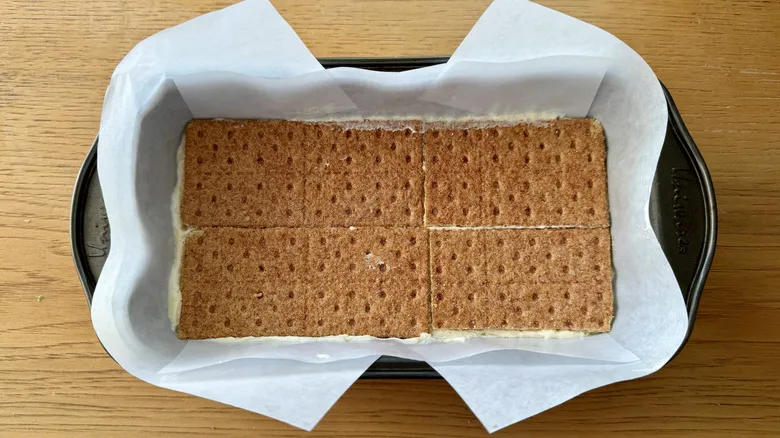
Add a layer of graham crackers on top, followed by the rest of the whipped mango mixture. Then, place another layer of graham crackers, and finish with a final layer of the vanilla whipped cream mixture.
Step 15: Freeze the cake
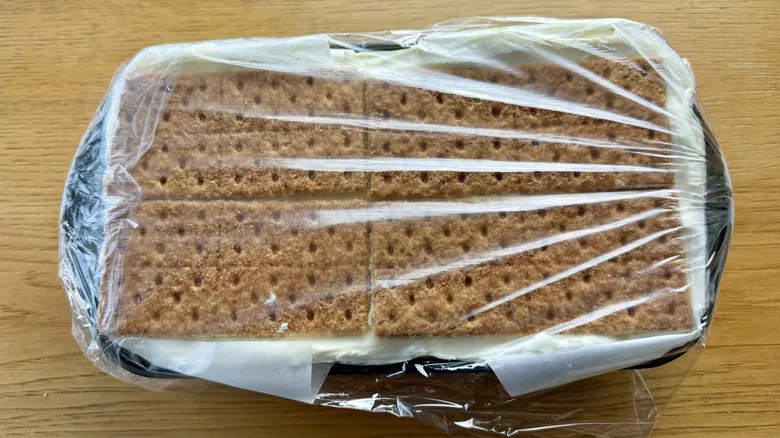
Top with a final layer of graham crackers and seal tightly. Freeze for a minimum of 4 hours or overnight.
Step 16: Unmold the cake
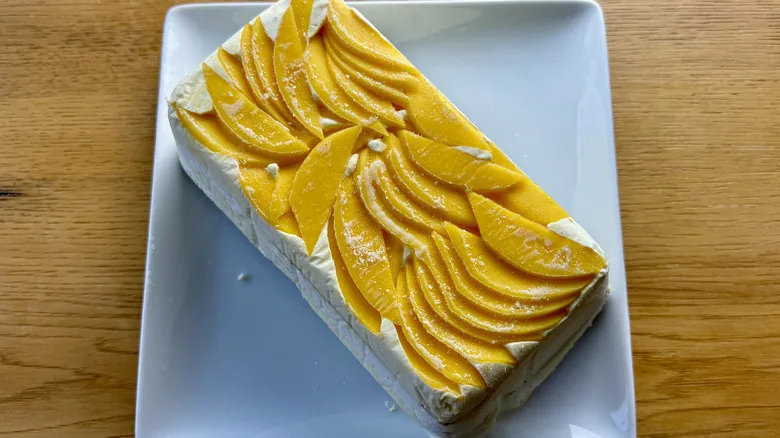
Flip the loaf pan onto a serving plate and take off the parchment paper (or plastic wrap).
Step 17: Mix the reserved diced mango with lime juice

Combine the leftover diced mango with the juice of half a lime.
Step 18: Garnish the cake

Garnish the mango float with diced mango, lime zest, toasted coconut flakes, and/or fresh mint leaves, if you wish.
Step 19: Thaw the cake or eat it frozen
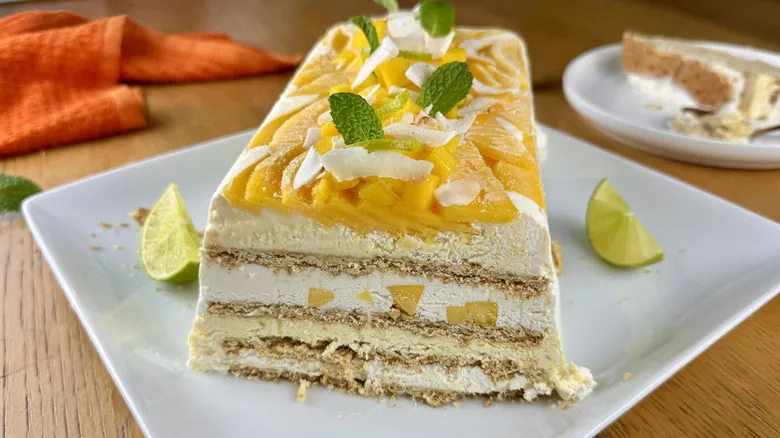
Allow to sit at room temperature for 10 minutes before slicing, or store in the freezer until you're ready to serve.
Does this mango float need to be served frozen?
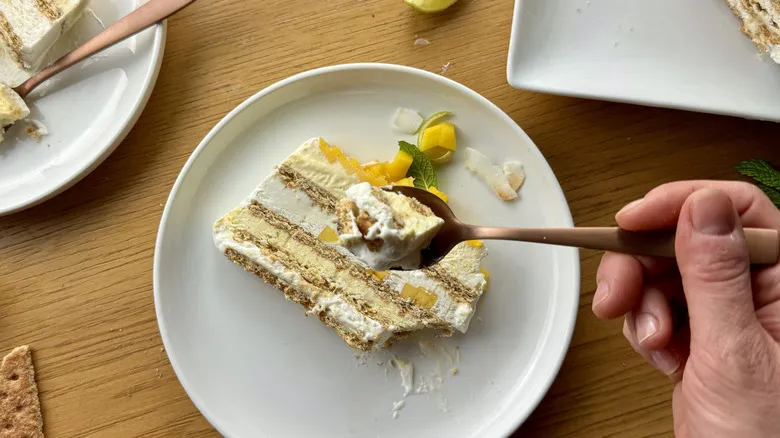
While we've chosen to create the frozen version of the mango float cake here, there are actually two distinct ways to enjoy it. Traditionally, although the cake can be frozen, it is typically chilled just enough to firm up for slicing. Rosenhouse notes, "It's incredibly refreshing, especially with the juicy bursts of fresh mango. This frozen variation elevates that refreshing quality. On a hot summer day, this frozen treat is ideal after a light meal or as a midday refresher."
The non-frozen version requires six hours in the refrigerator, although letting it sit overnight is also effective. If you're preparing the unfrozen version, it's crucial to line the bottom and sides of the pan with several layers of wax or parchment paper, leaving enough overhang to create sturdy "handles," as the cake won't be firm enough to release cleanly on its own. Additionally, the non-frozen cake may not slice neatly, so you might consider serving it in bowls rather than on plates.
The frozen version of the cake is somewhat quicker to prepare than the non-frozen one, as it can be ready in just two to four hours of freezing time. If you've ever tried no-churn ice cream, the base is quite similar — whipped cream and condensed milk freeze into a creamy, indulgent dessert. This cake is perfect for making ahead of time, as you can assemble it a day, a week, or even a month before you plan to enjoy it. There's no need to thaw it before serving, unless you prefer to let it soften for a few moments. However, this isn't necessary, as the cake can be savored straight from the freezer.
What are some tips for working with mangoes?
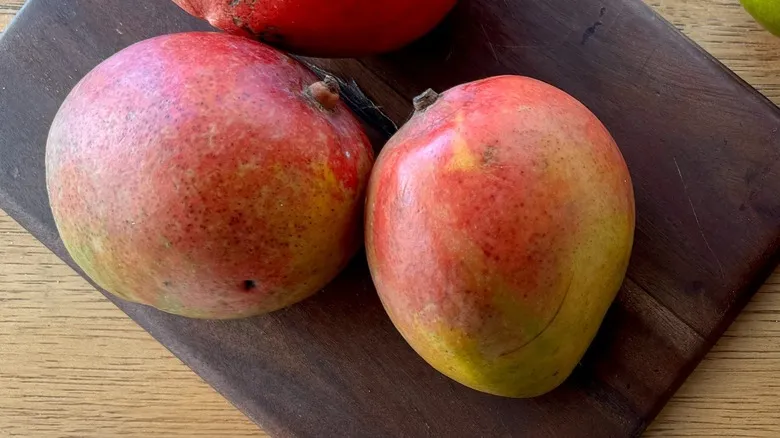
The types of mangoes commonly used for this cake in the Philippines are often referred to as Ataulfo, champagne, or honey. However, any variety of mango available at your local supermarket should work well. Frozen mangoes can also be a suitable alternative, as they will ultimately be frozen in this recipe. If you can find fresh mangoes, choose ones that are free from bruises or soft spots. Ripe mangoes should yield slightly to gentle pressure from your finger. Other indicators of ripeness include slightly wrinkled skin and a sweet aroma near the stem.
If your mangoes are not fully ripe when you purchase them, allow them to sit at room temperature until they soften. Once ripe, mangoes should be refrigerated but will only remain fresh for up to five days. If you don’t plan to make the cake within that time, peel and chop the mangoes and store them in the freezer.
Cutting a mango can be challenging due to the large pit in the center, but using the right tools can make it easier. Whether you choose a knife, spoon, vegetable peeler, or a combination of these, aim to cut as close to the pit as possible to reduce waste.
Recommended
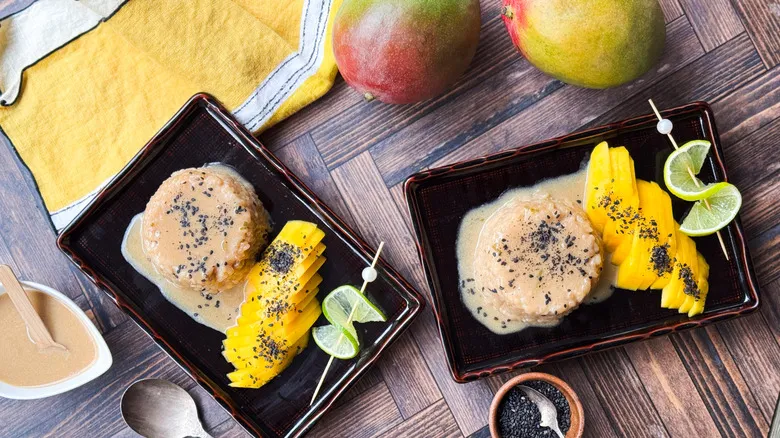
Shortcut Mango Sticky Rice Recipe
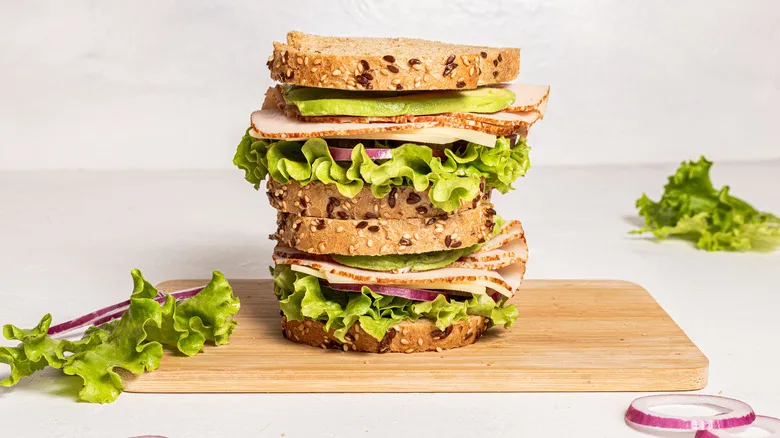
DIY Viral Sprouts Sandwich Recipe
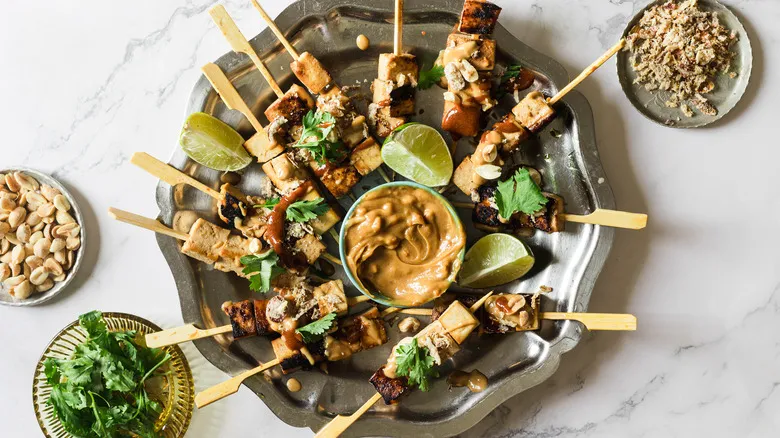
Satay-Style Grilled Tofu Skewers Recipe

Easy At-Home Pumpkin Spice Latte Recipe
Next up

